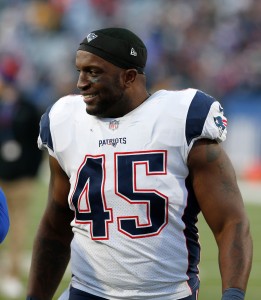Here at Pro Football Rumors, you’ll see a number of stories posted on players being cut, waived, or released by their NFL teams. While these terms are often used interchangeably, they’re not quite synonymous. A player who is “cut” has been removed from his team’s roster, but whether he is “waived” or “released” generally depends on his NFL experience.
Between the day after the Super Bowl and the following season’s trade deadline, players with less than four years of service time – or “accrued seasons” – have to pass through waivers after they’re cut by an NFL team. The other 31 clubs around the league have a day to place a waiver claim on that player, adding him to their roster and taking on his contract. That’s why we refer to these players as having been waived, rather than released.
If a player with more than four years of service time is cut between the Super Bowl and the trade deadline, he is not subjected to the waiver process, meaning he becomes a free agent immediately, able to sign with a new team right away if he so chooses.
This isn’t the case all year round, however. Once the trade deadline passes, any player who is cut by his team must pass through waivers, regardless of how many accrued seasons are on his résumé. So if a team cuts loose a 12-year veteran in Week 10 of the season, that player must pass through waivers unclaimed before he’d be free to sign with a team of his choice.
Here are a few more details on the waiver process:
- If two teams place a waiver claim on the same player, he is awarded to the team with the higher priority. Waiver priority is determined by the previous season’s standings — this year, for example, the Cardinals have first dibs, while the Super Bowl champion Patriots have 32nd priority.
- However, the waiver priority order will change starting in Week 4. At that point, waiver priority is determined by records of the current season.
- The window to claim a player closes at the end of the NFL’s business day, which is at 3:00pm central. So if a player is waived by one team on Monday, the other 31 clubs have until Tuesday afternoon to submit a claim. Players cut on Friday clear waivers (or are awarded to a new team) on the following Monday.
- Prior to the first cutdown date in training camp, injured players with fewer than four years of service time cannot be placed on injured reserve until they pass through waivers. Teams will cut this sort of player with a waived-injured designation, allowing other teams to place a claim if they so choose. If the player goes unclaimed, his team can place him on IR or agree to an injury settlement, then fully release him from the roster.
Note: This is a PFR Glossary entry, modified from a previous post by Luke Adams. Our glossary posts explain specific rules relating to free agency, trades, or other aspects of the NFL’s Collective Bargaining Agreement.






